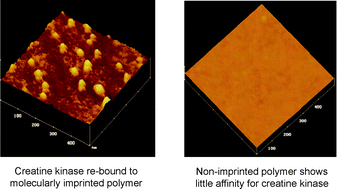A systematic approach to forming micro-contact imprints of creatine kinase
Abstract
A systematic approach has been used to form molecular imprints of

* Corresponding authors
a
Department of Chemical Engineering, National Cheng University, Tainan, Taiwan
E-mail:
tcchou@mail.ncku.edu.tw
Fax: +886 6 2757575 x 62639
Tel: +886 6 2757575 2366836
b Department of Chemical Engineering, Tatong University, Taipei, Taiwan
A systematic approach has been used to form molecular imprints of

 Please wait while we load your content...
Something went wrong. Try again?
Please wait while we load your content...
Something went wrong. Try again?
Y. Chen, J. Rick and T. C. Chou, Org. Biomol. Chem., 2009, 7, 488 DOI: 10.1039/B813361A
To request permission to reproduce material from this article, please go to the Copyright Clearance Center request page.
If you are an author contributing to an RSC publication, you do not need to request permission provided correct acknowledgement is given.
If you are the author of this article, you do not need to request permission to reproduce figures and diagrams provided correct acknowledgement is given. If you want to reproduce the whole article in a third-party publication (excluding your thesis/dissertation for which permission is not required) please go to the Copyright Clearance Center request page.
Read more about how to correctly acknowledge RSC content.
 Fetching data from CrossRef.
Fetching data from CrossRef.
This may take some time to load.
Loading related content
